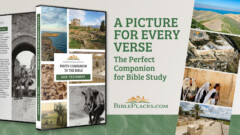Mother Teresa (known also as Mother Teresa of Calcutta) was born in what is now called the Republic of Macedonia in 1910. Born to Albanian parents she was at that time known as Agnes Gonxha Bojaxhiu. The labor for which she became renowned began on January 6, 1929 when she arrived in Calcutta, India to work with the poor and needy. When she died in September of 1997 she was the director of a worldwide missions organization known as the “Missionaries of Charity.” There are currently over 500 missions in more than 100 countries around the world. She was the recipient of numerous awards including the most prestigious of all awards, the Nobel Peace Prize. She was revered around the world as an example of Christian love and charity and as someone who dedicated her life to the noble cause of advancing the gospel to the poor and needy of the world while caring for their physical needs. Her legacy will doubtless be as one of history’s great humanitarians.
Upon examination, though, the Mother Teresa portrayed by the media and popularized in our culture is glorified (soon to be beatified) and almost deified. A close examination of her beliefs and the work she did shows that her legacy may be little more than fiction.
Mother Teresa, as goes without saying, was a devout Roman Catholic. As such, some of her beliefs would necessarily have to stand at odds with core Christian beliefs. This has not appeared to trouble many Christians who continue today, even in Protestant churches, to uphold her as a prime example of Christian virtue, love and self-sacrifice. Her devotion to Catholic theology is obvious in her speeches and writing. In a speech she delivered to the Worldwide Retreat For Priests in October of 1984 she made the following quotes:
a) “At the word of a priest, that little piece of bread becomes the body of Christ, the Bread of Life.”
b) “Without a priest, without Jesus going with them, our sisters couldn’t go anywhere.”
c) “When the priest is there, then can we have our altar and our tabernacle and our Jesus. Only the priests put Jesus there for us. … Jesus wants to go there, but we cannot bring him unless you first give him to us. This is why I love priests so much. We could never be what we are and do the things we do without you priests who first bring Jesus to us.”
d) “Mary … is our patroness and our Mother, and she is always leading us to Jesus.”
In just these four quotes we get a glimpse of beliefs that contradict so many gospel truths. We see a belief in transubstantiation (that the bread of communion actually becomes the body of Christ) and her belief that Christ is present in this bread. We also see her belief that Mary, the mother of Jesus, is a mediator between God and ourselves (see Catholic Catechism, paragraph #969, #1172 and #494) and as such, plays a role in our salvation.
While she worked with the poor, Mother Teresa was adamant that any type of evangelism was unnecessary.
While she worked with the poor, Mother Teresa was adamant that any type of evangelism was unnecessary. In her book, Life in the Spirit: Reflections, Meditations and Prayers, she says:
“We never try to convert those who receive [aid from Missionaries of Charity] to Christianity but in our work we bear witness to the love of God’s presence and if Catholics, Protestants, Buddhists, or agnostics become for this better men — simply better — we will be satisfied. It matters to the individual what church he belongs to. If that individual thinks and believes that this is the only way to God for her or him, this is the way God comes into their life — his life. If he does not know any other way and if he has no doubt so that he does not need to search then this is his way to salvation.”
Pages 81-82
With such a statement we can only be left believing that she was more than a Catholic, but was a Universalist, believing essentially that all religion leads to the same God. Time and again we see her expounding such universalist beliefs. In an interview with Christian News a nun who worked with Mother Teresa was asked the following in regards to the Hindus they worked with, “These people are waiting to die. What are you telling them to prepare them for death and eternity?” She replied candidly, “We tell them to pray to their Bhagwan, to their gods.”
A Simple Path is a compilation of the teachings and meditations of Mother Teresa. Labeled as a “unique spiritual guide” we would expect this book to contain unique insights into Scripture and into the Christian life by someone who is perceived as being a Christian spiritual giant. Instead, in the foreword we read,
“The Christian way has always been to love God and ones neighbor as oneself. Yet Mother Teresa has, perhaps with the influence of the East, distilled six steps to creating peace in ourselves and others that can be taken by anyone — even someone of no religious beliefs or of a religious background other than Christian — with no insult to beliefs or practices. This is why, when reading Mother Teresa’s words and those of her community, we may, if we choose, replace the references to Jesus with references to other godheads or symbols of divinity”
The six steps to peace taught by Mother Teresa are silence, prayer, faith, love, service, and peace. For anyone who was unsure of what they believed, she suggested starting with small acts of love towards others. She includes three pages of sample prayers and prefaces them by saying that if you are not a Christian you could replace the name “Jesus” with “God.” (Page 35). Through the entire book there is never a hint that she relies on Christ alone for her salvation. Rather we read things like, “I’ve always said we should help a Hindu become a better Hindu, a Muslim become a better Muslim, a Catholic become a better Catholic” (Page 31).
Consider also the following quote from another source, “I love all religions. … If people become better Hindus, better Muslims, better Buddhists by our acts of love, then there is something else growing there.” Or in another place, “All is God — Buddhists, Hindus, Christians, etc., all have access to the same God.”
We see, then, that Mother Teresa held beliefs that contradict many Biblical principles. Chief among these principles is that Christ is the only means of salvation. In John 14:6 Jesus states, “I am the way, the truth and the life. No one comes to the Father except through me.” By teaching that all religion could bridge the gap between man and God, Mother Teresa taught principles completely opposed to the Bible. At the same time she taught a bizarre “pseudo-pantheism” in which she believed Jesus was present in everyone. She said, “When we destroy an unborn child, we destroy God” (Nov 11, 1985 – Christian News) and “The dying, the crippled, the mentally ill, the unwanted, the unloved — they are Jesus in disguise. … [through the] poor people I have an opportunity to be 24 hours a day with Jesus.” [On another occasion, she again demonstrated her pantheistic religious philosophy: “Every AIDS victim is Jesus in a pitiful disguise; Jesus is in everyone … [AIDS sufferers are] children of God [who] have been created for greater things” (1/13/86, Time).]
Perhaps she was simply expounding Jesus’ teaching that “inasmuch as you did it to one of the least of these My brethren, you did it to me” but there is no Biblical justification for saying that Jesus is present within the poor and sick.
Despite the tens of millions of dollars donated to her charity each year, her missions were rudimentary and offered no real health care.
Contradictions in her beliefs, then, are apparent. We see similar contradictions in her humanitarian work. The common belief is that Mother Teresa worked with the sick and destitute to lovingly return them to health. An examination of her missions will show that this is far from the case. Mother Teresa believed that there is spiritual value in suffering. Once, when tending to a patient dying of cancer, she said “You are suffering like Christ on the cross. So Jesus must be kissing you.” (Christoper Hitchens – The Missionary Position: Mother Teresa in Theory and Practice, p. 41). For this reason she would not prescribe pain killers in her clinics, choosing instead to allow her patients to experience the suffering that she believed would bring them closer to Christ. Despite the tens of millions of dollars donated to her charity each year, her missions were rudimentary and offered no real health care. Her missions mainly catered to the critically ill and simply afforded them a place to go to die. It is interesting to note that when Mother Teresa became ill she would travel to the finest health care facilities to receive treatment.
What, then, is the importance of debunking the myth of Mother Teresa? The answer is this. Pastors of Protestant churches around the world continue to speak of Mother Teresa in saintly terms. They hold her up as the ultimate example of self-sacrifice for the sake of the gospel. From the pulpits they discuss how she responded to Christ’s Great Commission to spread the gospel to all lands. The reality, though, is that if she preached at all, she preached a false religion. In so doing she provides us with an example not of a Christian responding to God’s call, but an example of deeds of charity and compassion completely separated from the Truth.
Suggested Reading:
- Article written by a former Sister of Charity
- Interview with Christopher Hitchens
- Christoper Hitchens – The Missionary Position: Mother Teresa in Theory and Practice (available for purchase at Amazon.com
- The Bible. Read it, study it, and you will see that the conclusions drawn in this brief article are simply unavoidable.










